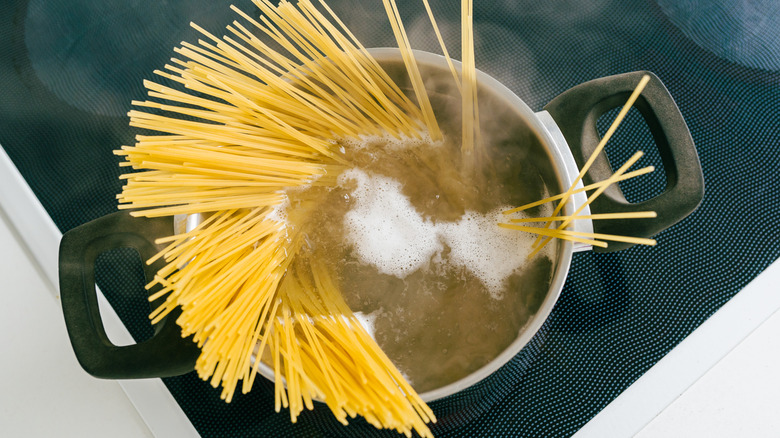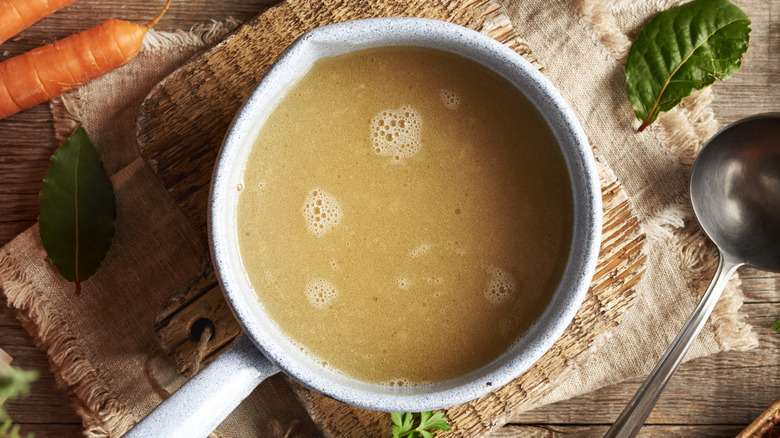Ditch The Water And Start Boiling Pasta In This Flavorful Liquid Instead
If you think you know everything there is to know about pasta, think again. Sure, making pasta is as easy as boiling water, in theory. But just using water is a missed opportunity to add an intense amount of flavor into the pasta itself — and not just to improve the texture of the sauce, which is already a great pasta cooking hack.
Instead of boiling your pasta in plain old water, you should try heating up a big pot of broth to cook your noodles in. Just like properly salting your pasta water makes the dish taste so much better, the already well-seasoned broth will get absorbed by the pasta as it cooks, and make sure it is properly seasoned throughout.
Cooking your pasta in broth also takes the flavor up a notch. Instead of just making your pasta salty, you can imbue bold, rich flavors all the way through your pasta which will make your sauces sing. Hell, your pastas will be so flavorful that they will barely need sauce. And the starchy pasta will also thicken the broth – ideal if you want to use leftover pasta cooking liquid to enhance soups. Even better, adding this deeper level of flavor to your pasta requires almost no extra effort.
How to cook pasta in a broth bath
Cooking pasta in broth is as easy as throwing a pot of water on the stove and bringing it to a boil — all you have to do is toss in a bouillon cube or a little paste and let it dissolve before adding your noodles. Or you could add a cup or two of store-bought or homemade broth to your water instead. You may not need to add additional salt if your broth is already salty enough. The boiling liquid should taste like a well-seasoned soup before adding your pasta to ensure the best flavor possible.
The type of broth you use is completely up to you. You can cook pasta in chicken broth for lighter sauces or those with bacon, for example, but the deep flavor of beef broth could pair well with hearty tomato sauces and meatballs, or a meaty ragu. And of course, veggie stock can be used just as easily for almost any application.
Italians have a history of cooking their pasta in a deeply flavorful liquid. Drunken spaghetti or pasta all'ubriaco is a classic dish where the pasta is cooked in hot red wine, making for a savory and slightly sweet plate of spaghetti. Or you may have seen pasta all'assassina on your social media feed, which is pasta cooked in a thin tomato sauce until deeply caramelized — essentially involving burning the noodles for more flavorful pasta. Boiling your pasta in broth is probably the easiest out of all these options, but still delivers an incredibly rich flavor.

